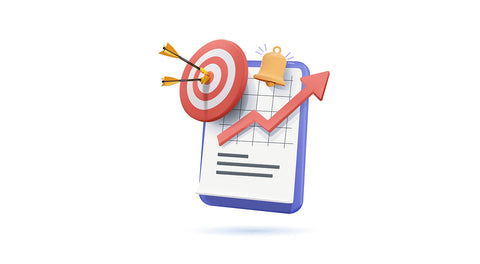Goalie Off-Ice Training Guide for Hockey (2025)
Off-Ice Training for Hockey Goalies
Goalies are the backbone of any successful hockey team. Their performance on the ice can make or break the game.
As a goalie, your physical fitness and skills play a crucial role in your success.
One effective way to enhance your overall performance is through off-ice training.
This article will provide a comprehensive guide to off-ice training for hockey goalies, including the benefits, components, and exercises to help you excel on the ice.
See Why The The Original Synthetic Ice Tile Developed By PolyGlide Ice Leads The Pack!
Benefits of Off-Ice Training
Off-ice training is essential for goalies because it helps to:
- Improve strength, power, and endurance
- Enhance flexibility, mobility, and balance
- Boost speed, agility, and reaction time
- Decrease the risk of injury
- Build mental toughness and discipline
 Components of a Comprehensive Goalie Off-Ice Training Program
Components of a Comprehensive Goalie Off-Ice Training Program
A well-rounded off-ice training program for goalies should focus on the following components:
Strength Training
Strength training is crucial for building the power needed to make explosive saves and maintain stability in the net.
Focus on exercises that target the lower body, core, and upper body.
Cardiovascular Endurance
Cardio training helps improve overall endurance and stamina, allowing goalies to maintain peak performance throughout a game.
Speed and Agility
Speed and agility training enhances a goalie's ability to move quickly and efficiently on the ice, improving reaction time and overall performance.
Flexibility and Mobility
Flexibility and mobility exercises ensure goalies can move fluidly in the net, reducing the risk of injury and improving range of motion.
Balance and Coordination
Developing balance and coordination skills enables goalies to maintain stability and control while making saves and tracking the puck.

Creating Your Off-Ice Training Schedule
A well-structured training schedule should include workouts that target each of the components mentioned above.
Aim to train at least 3-5 times a week, with a balance of strength training, cardio, and skill-specific drills.
Remember to allow for adequate rest and recovery between sessions.
Off-Ice Warm-Up and Cool-Down Exercises
Warming up before training is essential to prevent injuries and prepare the body for more intense exercises.
Some effective warm-up exercises for goalies include dynamic stretching, jumping jacks, and high knees.
After each training session, cool down with static stretching and deep breathing exercises to aid recovery.
Strength Training Exercises for Hockey Goalies
Lower Body Strength Exercises
- Squats
- Lunges
- Deadlifts
- Box Jumps
Core Strength Exercises
- Planks
- Russian Twists
- Bicycle Crunches
- Leg Raises
Upper Body Strength Exercises
- Push-ups
- Pull-ups
- Dips
- Overhead Presses

Cardiovascular and Endurance Training
Incorporate a mix of low-intensity, steady-state cardio (like jogging or cycling) and high-intensity interval training (HIIT) to improve your cardiovascular endurance.
Aim for 20-30 minutes of cardio per session, depending on your fitness level and training goals.
Speed and Agility Drills for Hockey Goalies
- Ladder Drills
- Cone Drills
- T-Drills
- Shuttle Runs
Flexibility and Mobility Exercises
- Hamstring Stretches
- Hip Flexor Stretches
- Calf Stretches
- Shoulder Stretches
Balance and Coordination Drills
- Single-Leg Stands
- BOSU Ball Exercises
- Wobble Board Drills
- Catch and Throw Drills

Off-Ice Training Equipment for Hockey Goalies
Some essential off-ice training equipment for goalies includes:
- Resistance Bands
- Stability Balls
- BOSU Balls
- Foam Rollers
- Agility Ladders and Cones
Staying Motivated and Tracking Progress
Set specific, measurable, achievable, relevant, and time-bound (SMART) goals to stay motivated and monitor your progress.
Regularly evaluate your performance and adjust your training plan as needed.
Common Mistakes to Avoid
- Overtraining: Allow for adequate rest and recovery to prevent injuries and burnout.
- Ignoring Technique: Focus on proper form to maximize the benefits of each exercise.
- Neglecting Nutrition: Maintain a balanced diet to support your training goals.
See Why The The Original Synthetic Ice Tile Developed By PolyGlide Ice Leads The Pack!
Conclusion
Off-ice training is a crucial aspect of a goalie's overall development and performance.
By incorporating strength training, cardiovascular endurance, speed and agility, flexibility and mobility, and balance and coordination exercises into your routine, you'll be well on your way to becoming a more powerful, agile, and resilient goalie on the ice!

Goalie Off Ice Hockey Training FAQs
Q: How often should a goalie train off the ice?
A: Aim to train at least 3-5 times a week, ensuring you include a mix of strength training, cardio, and skill-specific drills.
Q: How long should each off-ice training session be?
A: Each training session should last around 60-90 minutes, depending on your fitness level and training goals.
Q: Can off-ice training help prevent injuries?
A: Yes, off-ice training can help reduce the risk of injuries by improving strength, flexibility, mobility, and overall fitness.
Q: What equipment is necessary for goalie off-ice training? A: Some essential equipment includes resistance bands, stability balls, BOSU balls, foam rollers, and agility ladders and cones.
Q: How do I track my progress in off-ice training? A: Set SMART goals, regularly evaluate your performance, and adjust your training plan as needed to ensure you're making progress towards your objectives.




